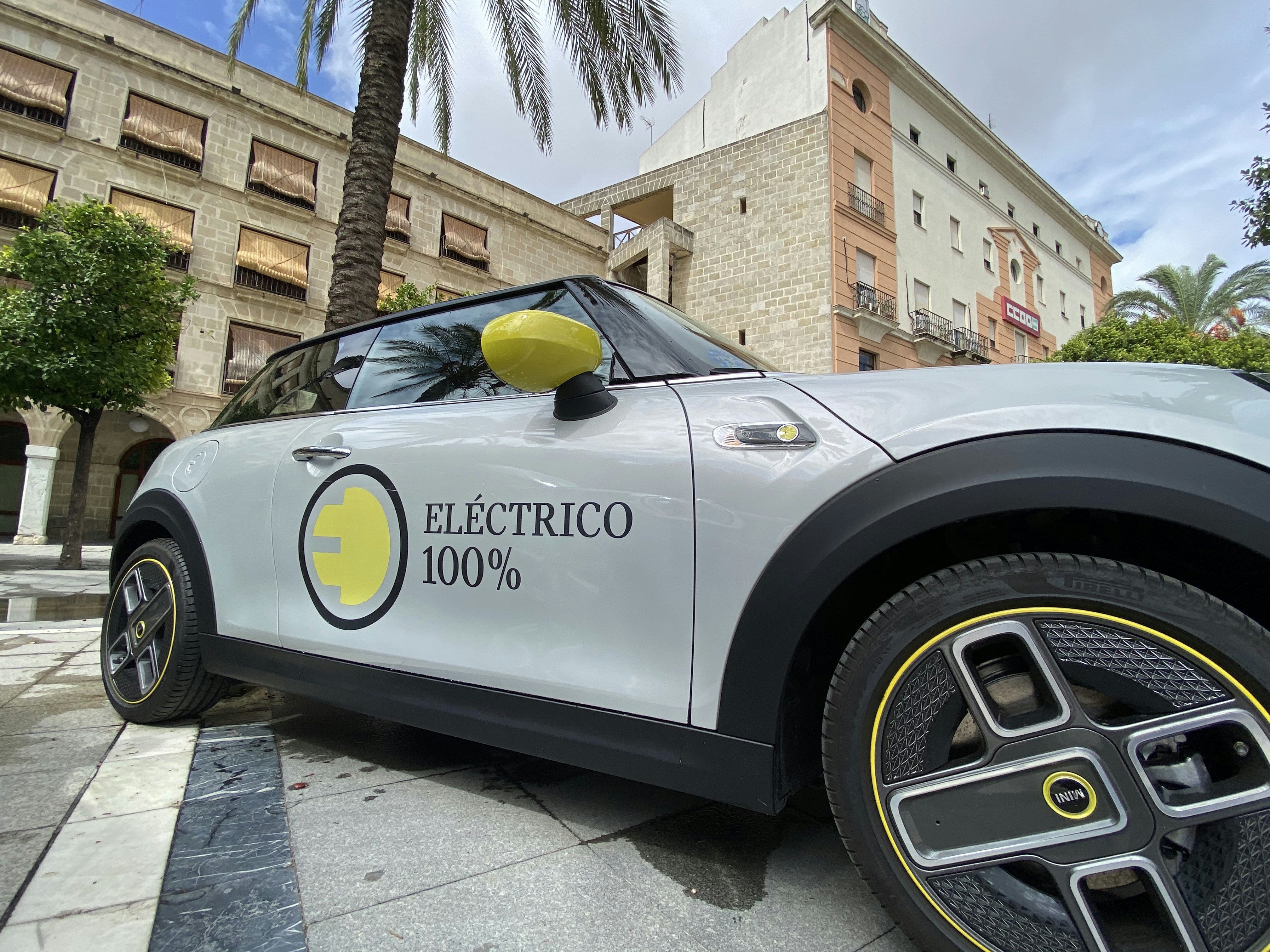Green Roads Ahead: How EVs Are Shaping Urban Green Spaces
Urban landscapes have undergone dramatic transformations in recent years, and the rise of electric vehicles (EVs) is one of the most significant factors driving this change. With their reduced emissions and quieter operation, EVs are not only enhancing the driving experience but are also playing a crucial role in fostering biodiversity and creating greener urban environments. Let’s explore how electric vehicles are helping shape the future of urban green spaces and the positive impact they're having on biodiversity.
The Intersection of EVs and Urban Ecology

As cities continue to grapple with pollution and overcrowding, sustainable solutions are essential. Electric vehicles represent a dramatic shift from traditional gasoline-powered cars, and this shift is paving the way for more eco-friendly city designs. According to the Harvard Business Review, cities adopting EV technology can expect increased air quality, improved public health, and a reinforced commitment to green initiatives.
Cleaner Air, Happier Spaces

Research shows that urban areas equipped with a higher number of EVs experience lower air pollution levels. The reduction of particulate matter and the absence of harmful emissions contribute significantly to the overall well-being of city-dwellers. When cities embrace electric vehicles, they create healthier environments for residents while providing critical habitats for various species.
Imagine strolling through a vibrant urban park where trees thrive, birds sing, and butterflies flit about—such scenarios become increasingly plausible with the integration of EVs in urban settings. The green spaces can flourish, as evidenced by established initiatives across cities championing EVs as part of their environmental strategies.
Urban Green Spaces: Redefining Biodiversity

With more people opting for electric vehicles, cities have a unique opportunity to expand eco-friendly green spaces. Transforming roads and parking lots into parks boosts local biodiversity by providing habitats for flora and fauna, enhancing the urban ecosystem.
The Role of Urban Wildlife and EVs

Electric vehicles aren't just reshaping the way we travel—they're also influencing how we design urban spaces to accommodate and sustain wildlife. By diminishing road noise and pollution, EVs create a safer environment where urban wildlife can thrive. Cities can implement biophilic designs—those that incorporate natural elements into architecture and urban planning—that use this concept to increase green areas, as discussed in our piece on wildlife design templates.
Consider cities that have repurposed spaces into mini green belts, utilizing the extra space generated from vehicular reductions. Imagine a city square, once dominated by noisy vehicles, transformed into a community garden where flora flourishes, or an urban forest that invites birds and insects to thrive.
EV Infrastructure and Parks: A Perfect Match

Establishing EV infrastructure, such as charging stations, in parks and green spaces can encourage more people to use electric vehicles when visiting these areas. Coupled with the rise of park-and-ride programs, commuters may choose to drive their EVs to distant parking lots, then hop onto public transportation to reach their final destinations.
Enhancing Accessibility and Easing Transportation

Public transportation that incorporates EV technology also benefits urban parks. Electric buses and trams provide an environmentally friendly and efficient way to access green spaces. This can help lower vehicle congestion while allowing more people to enjoy parks and gardens, showcasing the benefits of sustainable travel options.
The actual integration of EV technology into urban transportation networks can be observed in cities like San Francisco, where initiatives aim to create greener travel routes for commuters that encourage eco-friendliness and are essential for promoting biodiversity.
Redesigning Urban Landscapes with Nature in Mind

Cities worldwide are recognizing the potential of integrating EVs into urban planning. They are replacing conventional designs with eco-conscious alternatives that nurture biodiversity.
Green Corridors for Future-Friendly Cities
Picture green corridors—established pathways that prioritize biodiversity while incorporating electric-based transport. In cities such as Melbourne, green corridors are designed to facilitate migration and interaction among wildlife species, allowing ecosystems to thrive even in the bustling urban environment. These corridors not only offer a sanctuary for wildlife but also serve as lush pathways for pedestrians and cyclists, enhancing urban mobility.
This interconnectedness between transportation and green spaces may inspire cities to harness the benefits of EVs for urban planning significantly. Imagine a network of parks that seamlessly links with various modes of electric transportation, creating an integrated approach to urban life.
Technological Innovations Enabling Green Urban Landscapes
The electric vehicle industry is experiencing rapid growth, fueled by innovations that enhance their usability and sustainability. With improved battery technologies, environmental consciousness among manufacturers, and the implementation of smart technologies, EVs are becoming essential in redefining urban living.
The Future of Urban Mobility
As we transition to a future dominated by electric vehicles, cities can create a sustainable urban mobility framework. Innovations like autonomous electric vehicle systems are already setting the groundwork for streamlined urban transportation, as discussed in our blog about autonomous driving.
These developments enable cities to rethink how spaces are utilized and integrated, allowing electric vehicles to coexist harmoniously with greenery. The integration of advanced predictive maintenance solutions, powered by artificial intelligence (AI), further promotes sustainable vehicle ownership and minimizes waste, as highlighted in our resource about AI and predictive maintenance.
A Global Perspective on EVs and Urban Greenery
Different parts of the world are adopting unique strategies that leverage electric vehicles for enhancing urban biodiversity. European cities, for example, are advancing initiatives to integrate EVs with public green spaces while promoting eco-friendly practices among residents.
Spotlight on Global Innovations
Barcelona is setting a remarkable example of this integration. The city invested in creating more pedestrian-friendly areas, increasing green cover, and establishing charging stations in key public parks. Residents have reported improved quality of life, with greener spaces fostering a stronger sense of community.
Similarly, Asian cities like Shenzhen have transitioned public transport entirely to electric, showcasing governmental commitment to sustainable technology and urban health. The synergy between EV implementation and urban planning can lead to transformative changes, redefining how cities function while improving green spaces.
Engaging Communities in Sustainable Practices
For this shift to take root, community engagement is essential. Electric vehicles can serve as the centerpiece in promoting environmental consciousness among citizens. When communities actively participate in integrating bike-sharing programs, car-free days, and green educational initiatives, urban areas become much more vibrant.
Local Initiatives Breeding Environmental Awareness
Community-led initiatives in cities are encouraging dialogue regarding sustainability while emphasizing the importance of biodiversity. Discussions centered around reducing reliance on combustion engines and promoting electric alternatives can lead to important changes—such as advocating for local parks to become electric vehicle-friendly zones.
Having citizens involved in decision-making helps normalize these sustainable practices, resulting in thriving green spaces designed with both people and biodiversity in mind.
Collaborating for a Sustainable Future
Every stakeholder in the urban ecosystem—from government officials to businesses and community leaders—must play their part in creating a more sustainable urban future. High-quality collaboration leads to fruitful strategies that can tactically integrate electric vehicles into city layouts.
Local Governments and Electric Vehicle Initiatives
Local government initiatives should prioritize the combination of EV technology with urban green designs. Implementing programs that enhance awareness of diverse ecosystems, as explored through educational outreach efforts, can build up a foundation for impactful urban transformations.
Concrete actions—like incentivizing the development of EV infrastructure, supporting biodiversity projects, and collaborating with environmental organizations—can define a path towards establishing more sustainable cities.
Final Thoughts: The Road Ahead for Urban Green Spaces
The transition to electric vehicles presents a unique opportunity to reshape urban landscapes for the better. By enhancing urban spaces and promoting biodiversity through EV initiatives, cities can create healthier, more sustainable environments for current and future generations. Electric vehicles are not merely a mode of transportation; they represent a movement toward eco-friendly urban living.
As we tiptoe into the future, it's vital that we consider how these changes affect not just our travel habits but our shared ecosystem. The journey begins with awareness, innovation, and collaboration—from there, the possibilities for greener urban spaces are endless.
Explore Further
To stay informed about how electric vehicles are reshaping urban experiences and enhancing green spaces, consider reading our article on the future of electric vehicles in 2025. Blending technology and nature creates a beautiful landscape for both biodiversity and community health, letting us all ride smoothly into a verdant tomorrow.


